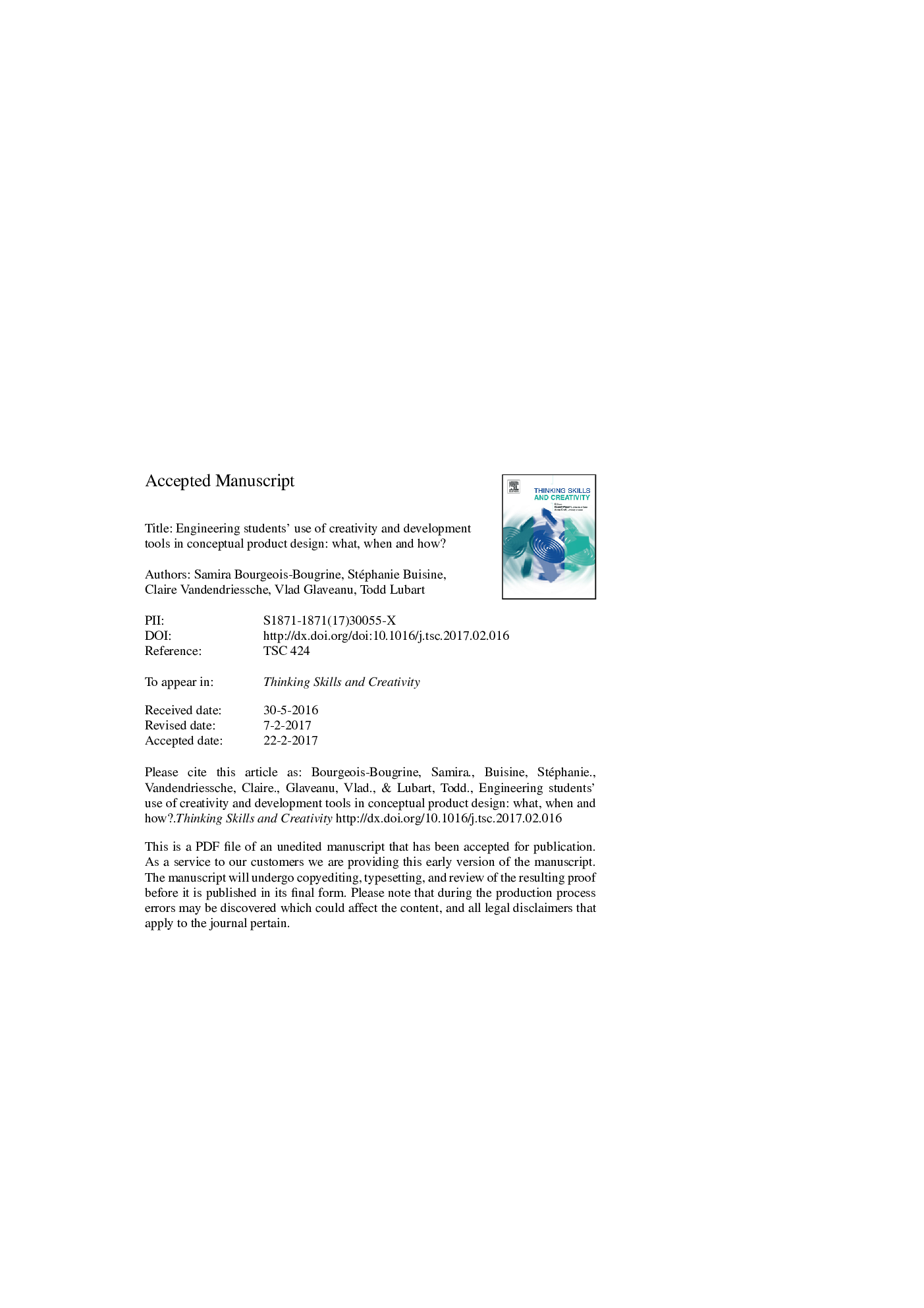| Article ID | Journal | Published Year | Pages | File Type |
|---|---|---|---|---|
| 4941858 | Thinking Skills and Creativity | 2017 | 33 Pages |
Abstract
As creativity has become a requisite skill for engineers and a part of their basic training, one of the challenges in engineering education is to supply students with a good understanding of creativity and development tools. The aim of this study was to assess the effectiveness of these tools during a conceptual product design challenge. Students were introduced to creativity and development techniques and were provided the opportunity to choose and apply various methods during a hands-on project over 10 sessions distributed over 8 weeks. The analysis of the workbook used to record their progress showed individual differences in the creative process stages and performance as well as the nature of the tools used, when these tools were applied, and their effectiveness. The most creative students (C+) came up with original unique concepts, employed significantly more tools than the less creative ones (Câ) and sustained their effort to find ideas up to the very end of the project. Most students who used Analogies, Personas, mind mapping, purge, and/or reverse brainstorming produced unique ideas, a variety of concepts as well as technological innovations. Structured and rational methods, such as functional analysis were used by both groups C+ and Câ. This structured approach resulted in a mere reformulation of the specifications' brief that helped students to clarify the problem and to better understand the functions and the constraints and they felt “ready to get started”. As it was observed with TRIZ, FAST, SADT, APTE and IRAD, the majority (78%) of the students who applied functional analysis did not come up with any unique or original kitchen concepts. The findings are discussed in relation to the effectiveness of the creativity training to improve the students' confidence in their creative potential, as well as the fit between the tools used and (a) the conceptual design challenge, (b) the phase of the creative process, and (c) individual preferences such as the need for structure and closure.
Related Topics
Social Sciences and Humanities
Psychology
Developmental and Educational Psychology
Authors
Samira Bourgeois-Bougrine, Stéphanie Buisine, Claire Vandendriessche, Vlad Glaveanu, Todd Lubart,
